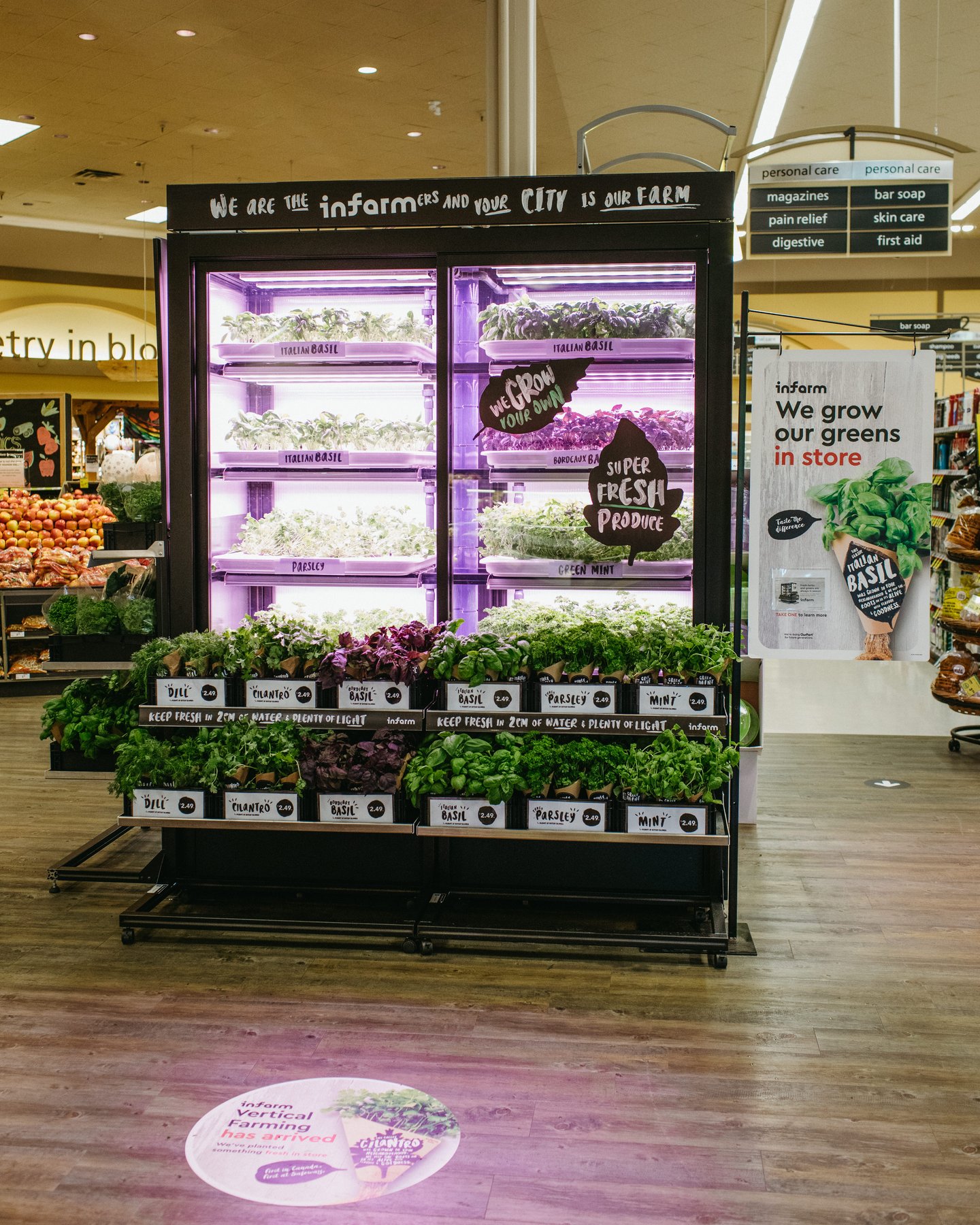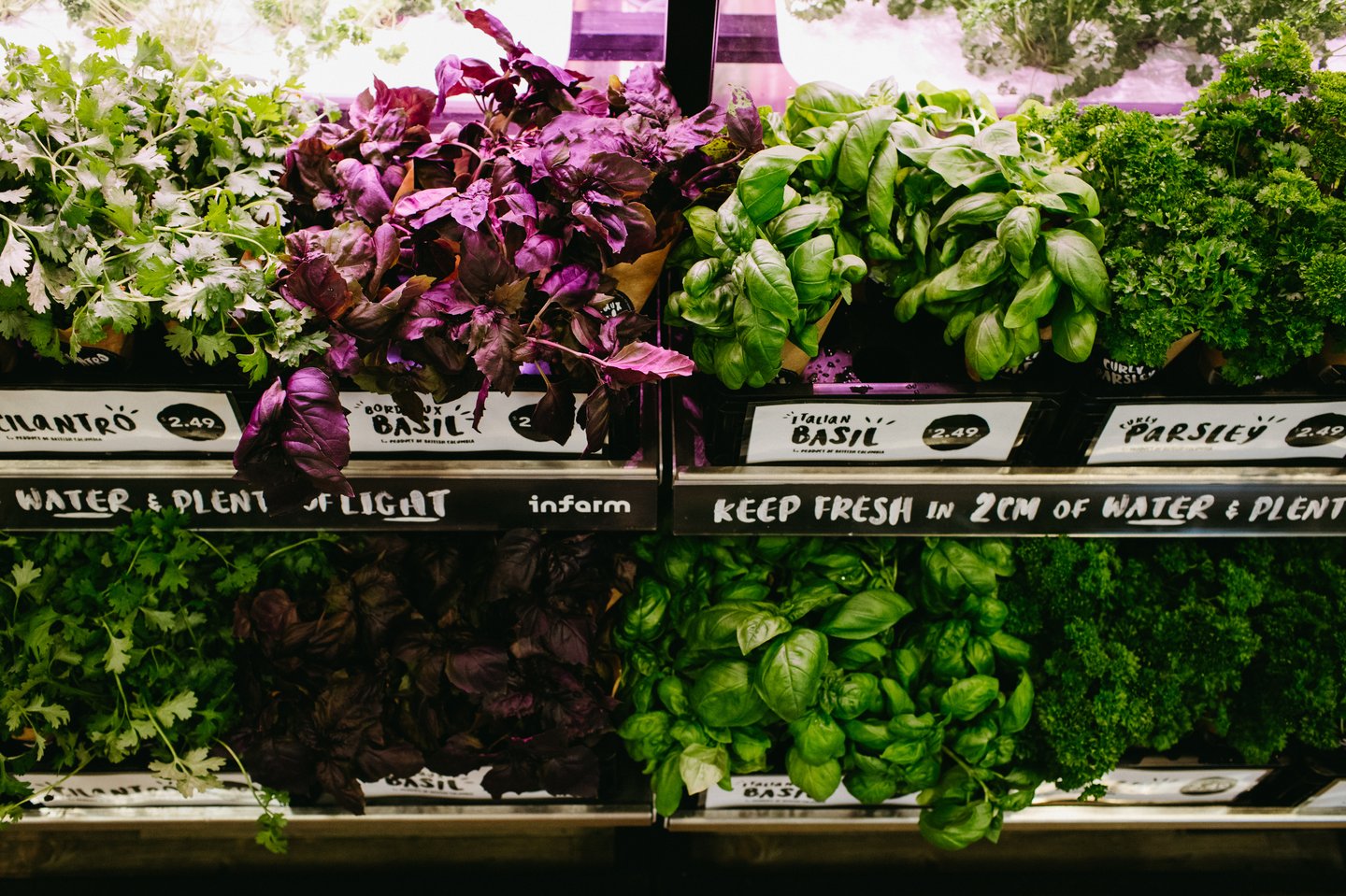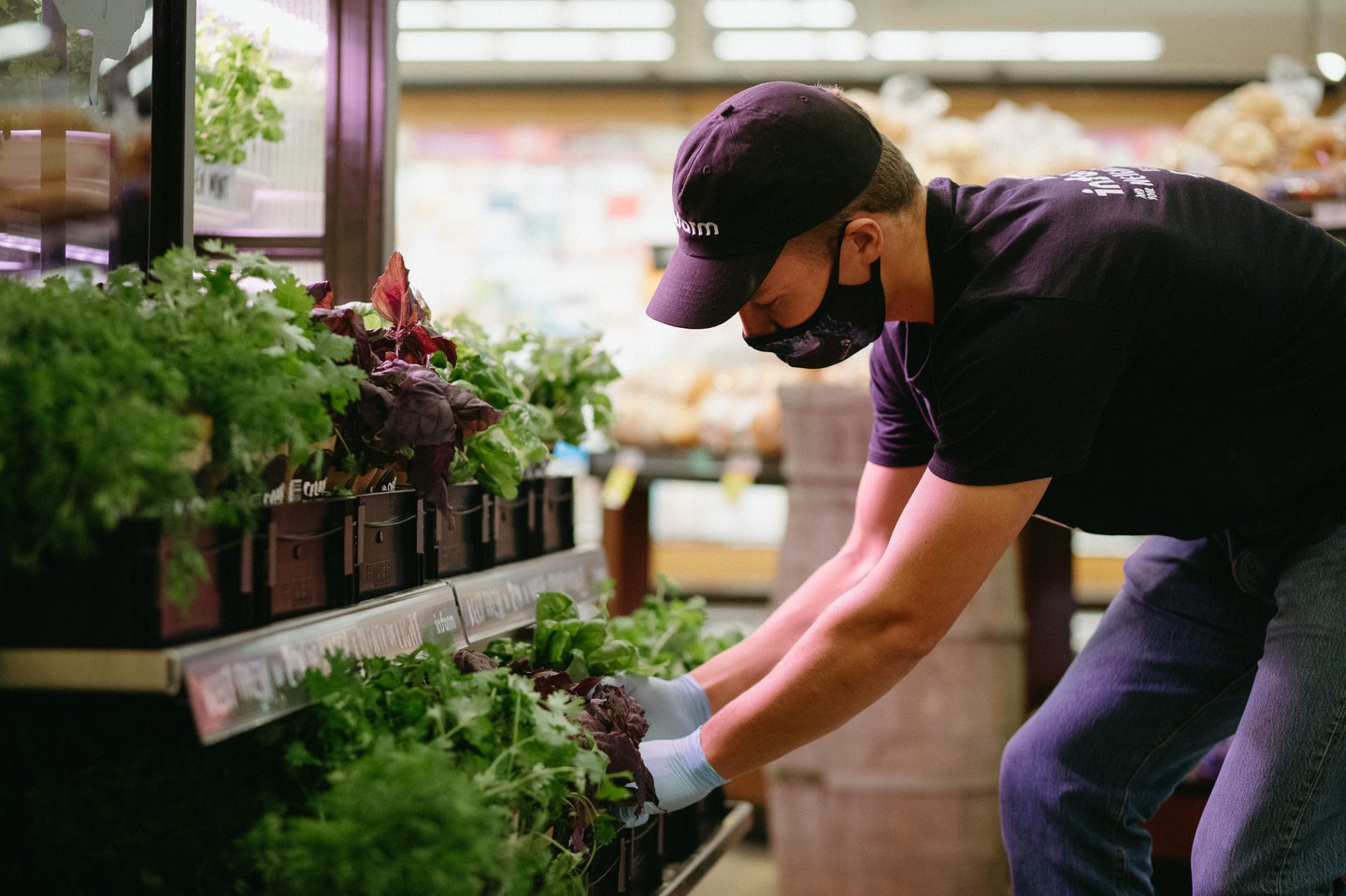Sobeys brings store-grown produce brand Infarm to Ontario
Sobeys has expanded its one-year-old partnership with Berlin-based vertical farming startup Infarm, bringing the company’s in-store growing platforms to 16 locations throughout Ontario.
Sobeys parent Empire first partnered with Infarm last year, rolling out the company’s in-store units across Safeway and Thrifty stores in both Vancouver and Victoria. To date, it has installed 26 units across B.C.
With the Ontario rollout, Infarm produce will be available at 16 Sobeys stores throughout the Greater Toronto Area, as well as Brantford and Kitchener. The company also plans to roll out Infarm in Calgary, Edmonton and Halifax sometime this year.
Niluka Kottegoda, vice-president of customer experience for Sobeys, says customers have responded favourably to Infarm, attracted by the ability to purchase fresh and superior-tasting local produce on a year-round basis.
The Infarm products have proven particularly popular as consumers have been forced to cook at home more because of the pandemic, says Kottegoda. “This gave them an enhanced opportunity in terms of the quality of ingredients and the flavours they can introduce in their home cooking.”
Infarm units enable Sobeys to offer fresh produce that is grown without chemical pesticides. Infarm says its hydroponically grown produce requires 95% less water, 90% less transportation and 75% less fertilizer than industrial agriculture.
“The greatest benefit we’re seeing is that absolute freshness, it’s a chemical-free product and it’s hyper-local because it’s grown right in our stores,” says Kottegoda. “And there is a sustainability component to it in terms of carbon footprint.”
Kottegoda says the Infarm produce is intended to complement Sobeys’ existing produce assortment. It does carry a slight price premium that’s comparable to the organic produce sold by Sobeys.
Produce grown inside the in-store Infarm units includes leafy greens, lettuce, kale and herbs such as basil, cilantro, mint and parsley. Infarm is also reportedly planning to expand into chillies, mushrooms and tomatoes. The growing cycle for the products averages five weeks, says Kottegoda.
Each growing unit is attached to a central monitoring system that allows Infarm to determine the optimal amount of nutrients, water and light to ensure the produce’s taste, freshness and nutritional value. Human intervention is limited to Infarm trained “farmers” who harvest the produce and ensure it is ready for customers.
While it’s unlikely Sobeys customers will abandon traditional farm-grown produce in favour of Infarm herbs and greens, Kottegoda says the store-grown products are well-aligned with increased customer receptivity to natural and organic products.
“I think as they start to try products and we give them choice, they will essentially let us know when they’re ready for that tipping point to happen,” she says. “We’re always monitoring how our customers are purchasing and what they’re looking for, and it’s all about complementing our [existing] assortment.”
Kottegoda says educating consumers is “definitely” key to growing the Infarm business, though there is considerable consumer interest in the vertical growing units and the overall concept. “It certainly attracts attention, and we have been getting positive feedback,” she says. “As much as we’re 110% focused on safety and all our protocols, it was nice to bring in a little innovation—both for our customers and our store teams.”
Headquartered in Berlin, Infarm has raised more than US$400 million in funding, and currently has agreements in place with retailers including Aldi in Germany, Marks & Spencer in the U.K., and Kroger in the U.S.
According to a recent Reuters report, the eight-year-old company recently recruited investment bank Goldman Sachs to engage in talks with so-called special purpose acquisition companies (also known as SPACs) about a potential merger ahead of a public listing that could result in a valuation of more than US$1 billion.



